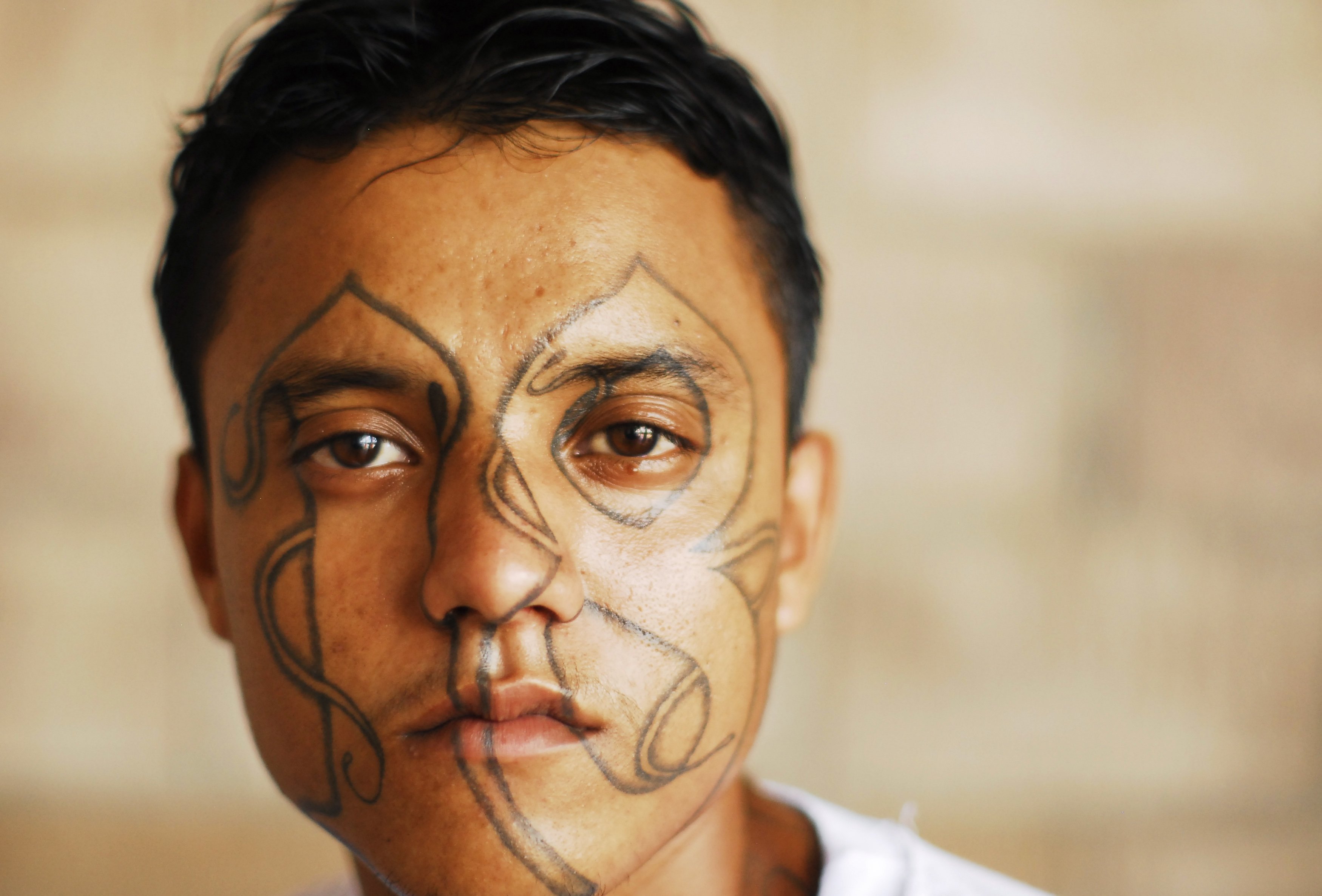 REUTERS/Ulises RodriguezAn imprisoned member of street gang Mara 18 poses for a photograph at the Izalco prison, about 40 miles from San Salvador, May 20, 2013.
REUTERS/Ulises RodriguezAn imprisoned member of street gang Mara 18 poses for a photograph at the Izalco prison, about 40 miles from San Salvador, May 20, 2013.Gangs like the Mara Salvatrucha have spread their influence all over the Western Hemisphere, and one of the clearest signs that you’re dealing with a member is the garish tattoos that often adorn their bodies.
The designs of those tattoos are often different, specified by the individual and their gang, but there’s an underlying reason for why they get them, and it makes perfect business sense.
“There’s a weird economic reason for these tattoos: It makes these employees much easier for the cartel or the gang to keep hold of,” Tom Wainwright, author of “Narconomics” and former Economist reporter in Mexico City, told Business Insider.
“If you picture one of these gangs in El Salvador, where many of the members have tattoos, literally from head to toe, it’s much much harder for those employees to go and find a job somewhere else,” Wainwright added.
The Mara Salvatrucha, also known as MS-13, is most closely associated with the head-to-toe tattoos.
Prisons in El Salvador and Honduras, where MS-13 is based, are full of current and former gang members coated with ink identifying their loyalties, whether they be to MS-13 or another Central American gang like Barrio 18, which is regarded as one of MS-13’s main rivals.
 REUTERS/Ulises RodriguezA member of the 18th Street gang poses for a photo at the prison of Izalco, about 40 miles from San Salvador, April 13, 2012.
REUTERS/Ulises RodriguezA member of the 18th Street gang poses for a photo at the prison of Izalco, about 40 miles from San Salvador, April 13, 2012.
While the inkings are often inscrutable to outsiders, members of the gang world are familiar with their meanings. This helps them identify compatriots and prevents members from straying.
“These guys can’t find work anywhere else,” because the markings make it difficult for them to switch allegiances, Wainwright told Business Insider.
“They can’t find work with a rival cartel, and so they have to stay working for the gang that they started off with. This makes them much cheaper and it means that the gang can treat them how they like.”
 REUTERS/Jose CabezasA policeman detains a suspected member of the MS-13 gang at a check point during the second day of a suspension of public-transport services in Apopa, El Salvador, July 28, 2015.
REUTERS/Jose CabezasA policeman detains a suspected member of the MS-13 gang at a check point during the second day of a suspension of public-transport services in Apopa, El Salvador, July 28, 2015.
As these gangs have spread to places were anti-gang law-enforcement efforts are more robust — like the suburbs of Washington, DC — the tattoos have become a less central part of gang life.
Tattoo-removal programs have also cropped up, as government and civil-society efforts to pull people away from gangs have ramped up.
But for MS-13 and other gangs, where proof of loyalty is vital, tattoos aren’t going anywhere.
“It’s something that’s strongly encouraged,” Wainwright said. “And I think if you want to join a gang like the Mara Salvatrucha in El Salvador, you can’t join unless you get the tattoos.”
NOW WATCH: EX-UNDERCOVER DEA AGENT: What I did when drug dealers asked me to try the product
















